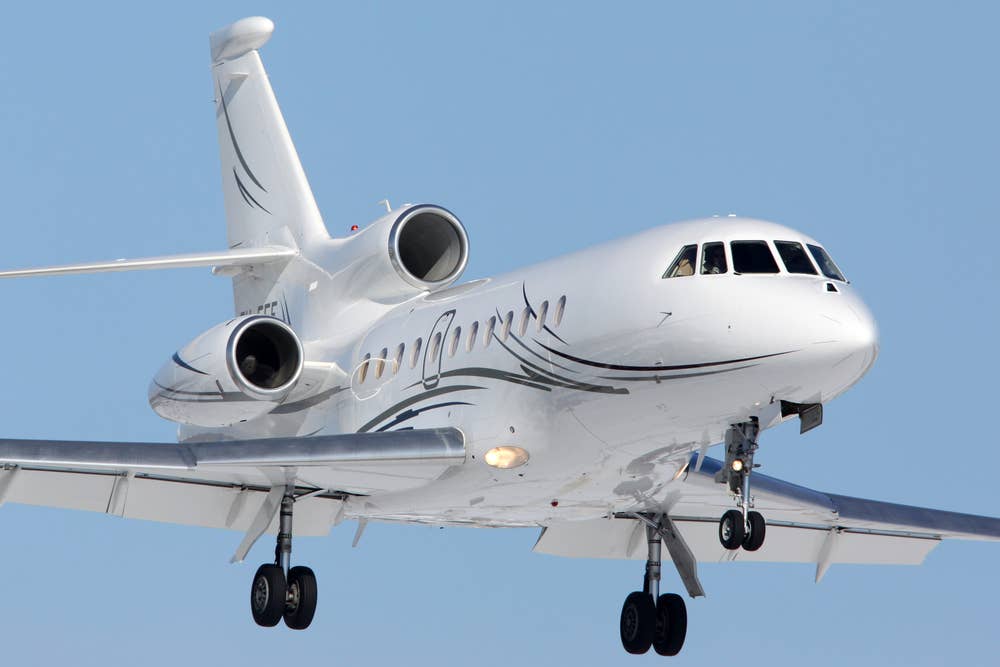Business Aviation’s Workhorse Engine Marks Its 50th Birthday
Honeywell’s TFE731 turbofan helped define the business jet category in the early 1970s.

The Dassault Falcon 900 is among many business jets powered by Honeywell TFE731 turbofans. [Shutterstock]
Coming up with the right analogy to describe Honeywell’s (NASDAQ: HON) TFE731 engine can turn into a parlor game. You could say the widely used turbofan is the Lycoming O-320 of the jet world, or perhaps it is more akin to the -540 series.
If a vintage-car buff entered the conversation, the TFE731 would certainly be the Chevrolet small-block V-8 of aviation.
Like those piston powerplants, the TFE731 has been an industry workhorse for decades. Indeed, the engine turns 50 this summer. Following certification in August 1972, it entered production the following month into what some might call a perfect storm in the aviation market.
Lear, Dessault, and Cessna
The business jet segment arguably was born in the 1960s with the introduction of the Lear 23. But by the early 1970s, it was coming of age rapidly as demand for private and corporate jet travel boomed. The TFE731, then built by Garrett AiResearch, arrived just in time to power a number of definitive new aircraft, including the Lear 35, Dassault Falcon 50, and the upgrade to the Cessna Citation line, the Model 650 or Citation III. FLYING’s pages in the June 1975 issue featured a report on the Falcon 10 highlighting the TFE731—and Ziff Davis Publishing awarded the turbofan the “Aviation Product of the Year” prize for 1975.
Today, Honeywell continues to manufacture variants of the engine for new aircraft as well as those in the aftermarket, such as the Gulfstream 150, Dassault Falcon 900, and Bombardier Learjet 70/75. It remains a stalwart of the midsize jet segment that forms the backbone of business aviation. Honeywell says 13,000 TFE731s have been produced and about 9,400 are still in service. Together, they have logged 108 million flight hours.
Geared, Twin-Spool Turbofan Design
Honeywell says the engine stands out historically because it was designed for business aviation, unlike earlier engines that had been adapted from military aircraft. The TFE731 was intended to boost fuel economy and range while cutting noise pollution, which was a major hurdle for early business jets. Its geared, twin-spool turbofan design developed from the TSCP700 auxiliary power unit used in the McDonnell Douglas DC-10 airliner.
Honeywell says the TFE731-2 engines built in the early 1970s generated 3,500 pounds of takeoff thrust and cut fuel consumption by 30 to 40 percent compared with other competing engines. The latter enabled transcontinental flight, which was a major selling point. Though Learjet and Dassault were the launch customers for the new engine, more manufacturers—including Lockheed (NYSE: LMT), Cessna (NYSE: TXT), Israel Aerospace Industries, and Raytheon/Hawker Beechcraft (NYSE: RTX)—soon began using it. The military engine also found its way into training aircraft, including the CASA 101 and AIDC AT-3.
Honeywell says the engine has received 34 aircraft type certifications and has been produced in 80 configurations. The engine continues to evolve, with the latest version, the TFE731-60, rated at 5,000 pounds of takeoff thrust, and flown on the Falcon 900EX.

Subscribe to Our Newsletter
Get the latest FLYING stories delivered directly to your inbox






